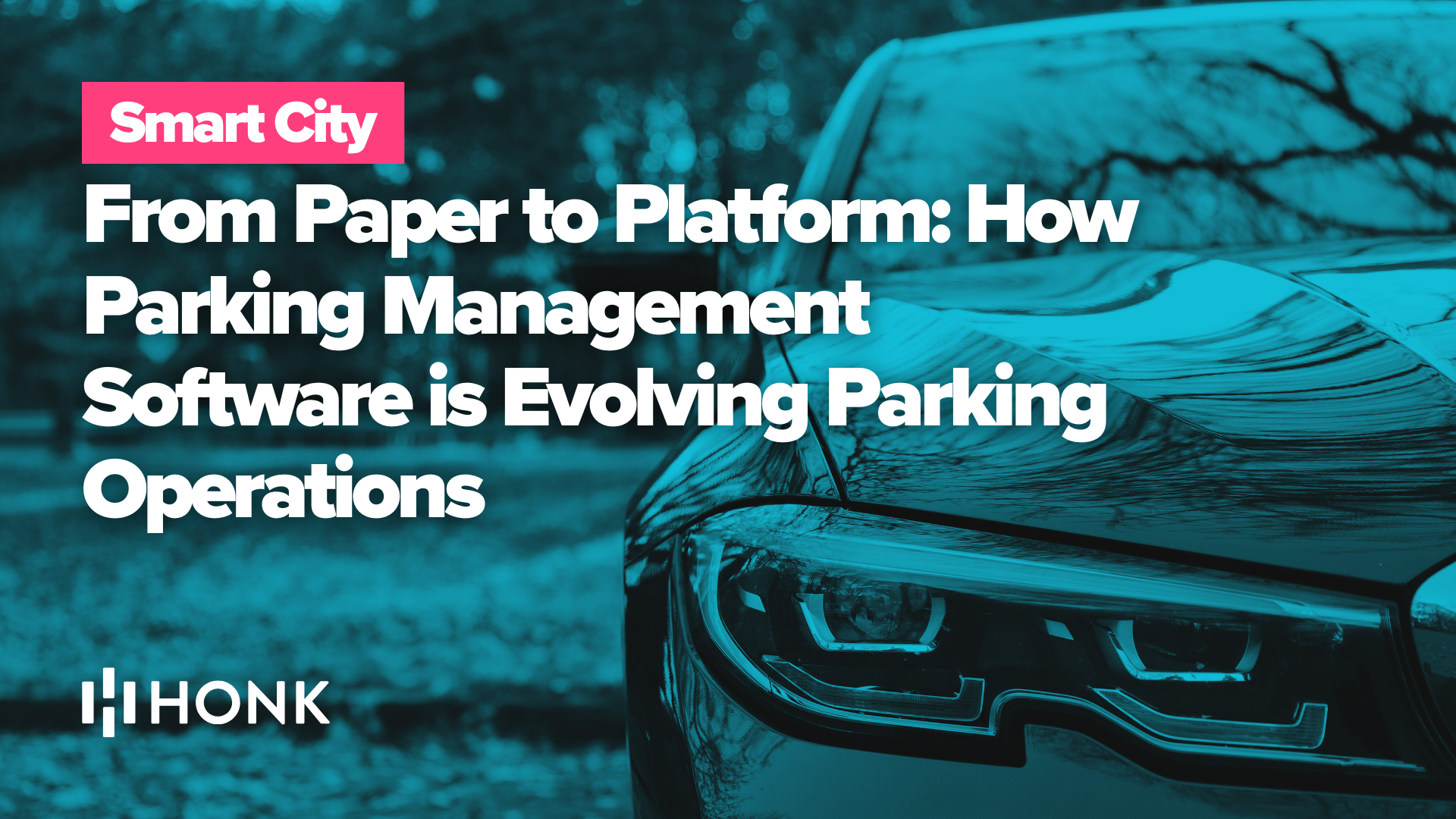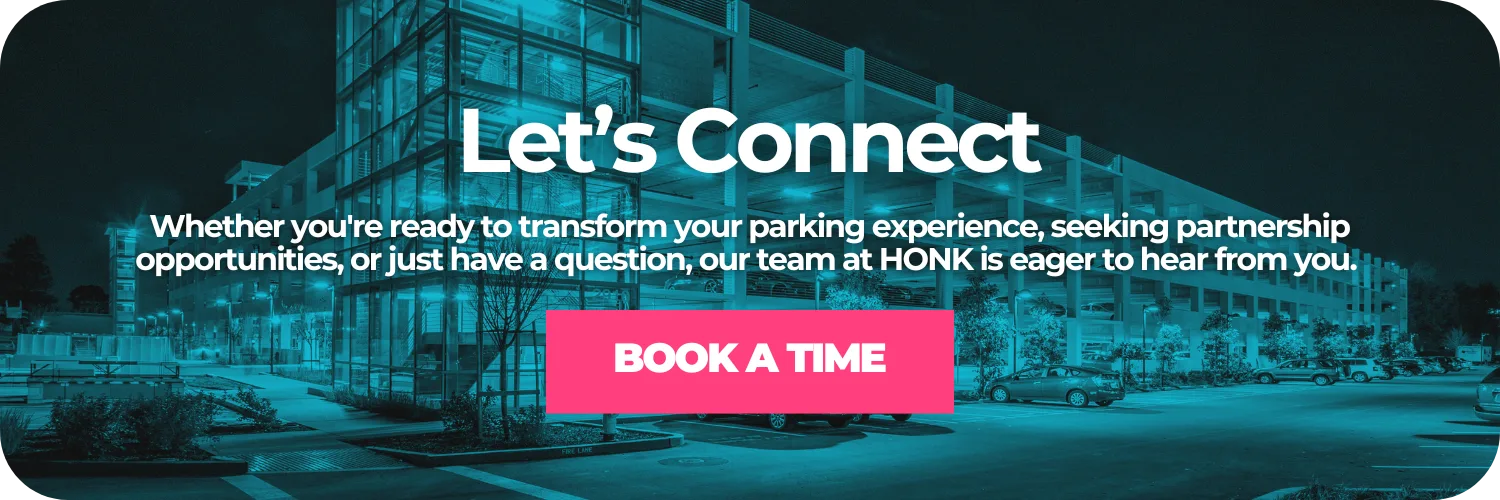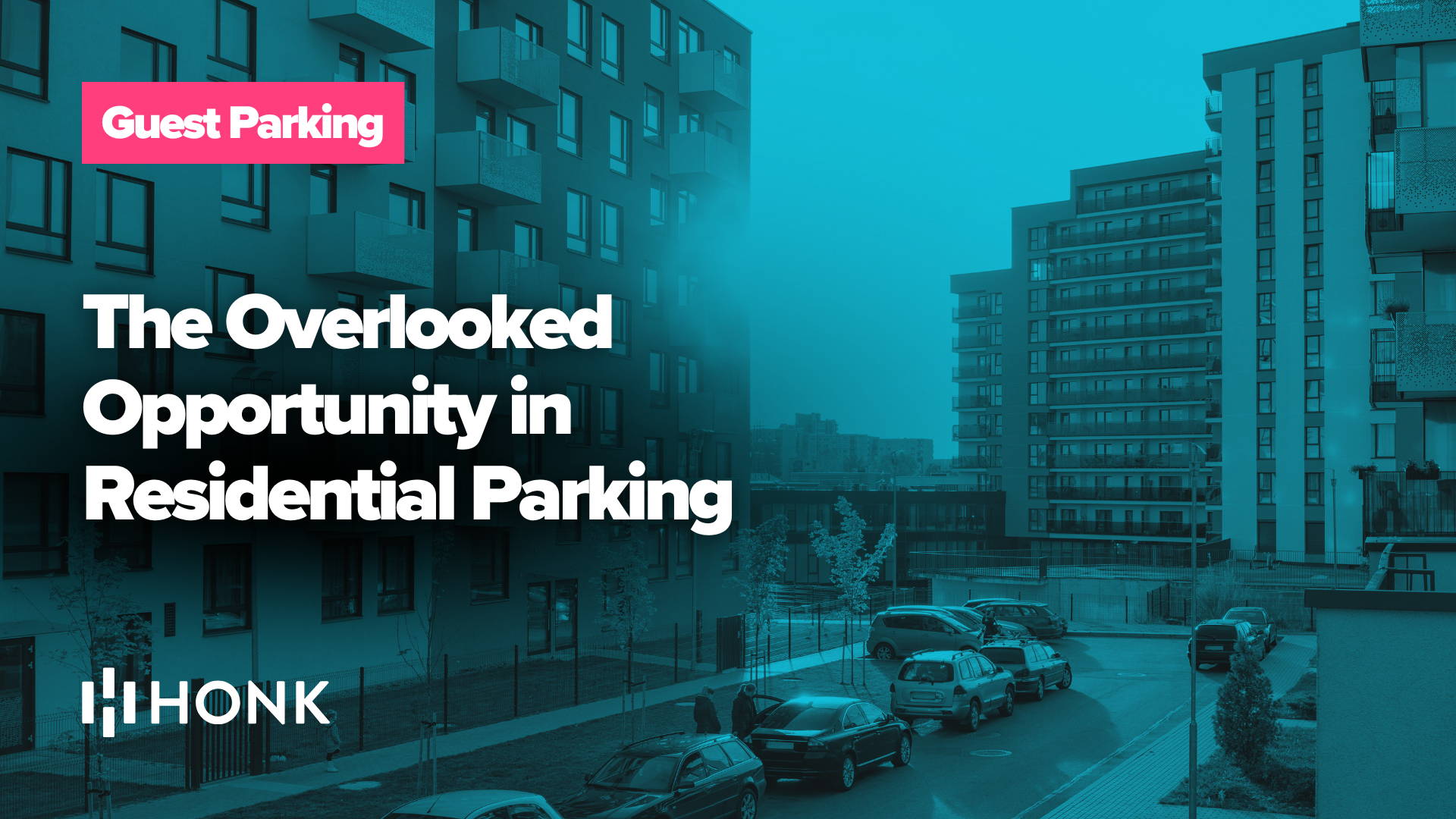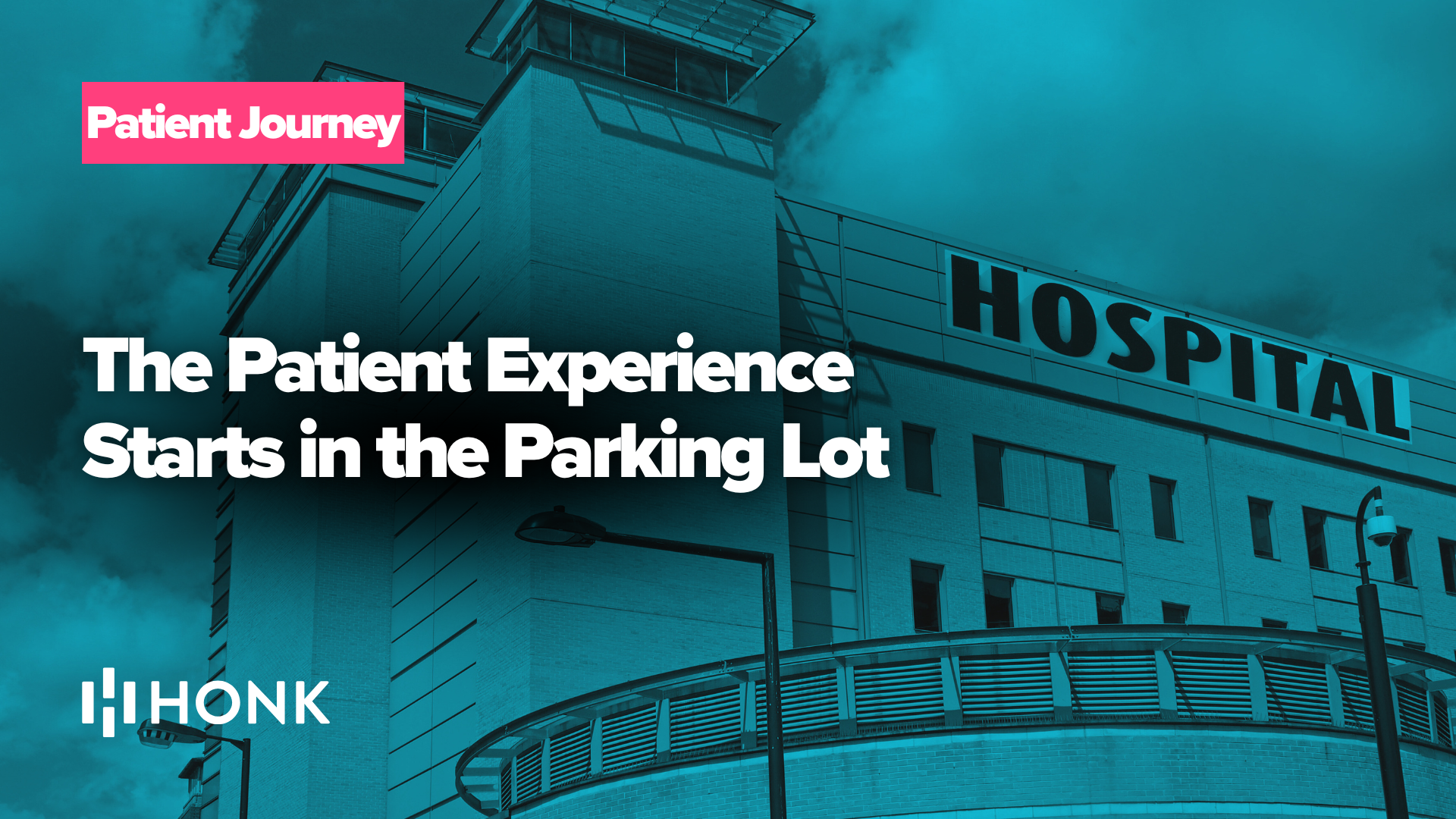Parking operations are undergoing a digital revolution. Traditionally, parking lot operators managed parking with coin meters, paper tickets, and logbooks. That paper-based approach is being replaced by software-driven systems that are mobile-first, cloud-based, and highly automated. The shift isn’t just about convenience—it’s transforming parking into a more efficient, profitable, and customer-friendly business. Forward-thinking operators who’ve embraced modern parking management software are already seeing the payoff. Many report a 15–20% increase in daily transactions after moving to digital payments. The global market reflects this momentum: the smart parking sector is projected to surge from $8.5 billion in 2023 to $48.3 billion by 2033 as cashless payment systems and mobile apps become the norm.
Honk, a leader in smart parking solutions, exemplifies this digital transformation. Through the HonkMobile app and cloud platform, HONK has helped operators turn analog lots into connected, data-driven operations. Its parking operator software integrates everything from contactless parking technology and mobile payments to real-time analytics and license plate recognition (LPR). The goal: streamline parking operations, reduce overhead, boost revenue, and vastly improve the experience for every parker. In this post, we’ll explore how parking management is evolving “from paper to platform”—and how going digital reduces costs, increases revenue, improves customer experience, and supports scalability for parking operators.
The Pitfalls of Paper: Traditional Parking Management Woes
Legacy parking systems may evoke nostalgia, but they suffer from serious shortcomings. They frustrate customers with inconvenience (drivers hate fumbling for coins or waiting in line at kiosks), and they burden operators with high labor and maintenance costs (counting cash, servicing machines—handling physical money can consume roughly 9% of collected revenue in overhead). On top of that, old setups provide virtually no real-time data on usage or performance, and they scale poorly. Expanding capacity means installing costly new meters, and changing rates requires manual reprogramming or physical signage updates—an inflexible approach ill-suited to modern demands.
In today’s fast-paced environment, these limitations are no longer acceptable. Drivers expect the same ease from parking that they get in other aspects of daily life, and operators need agile tools to maximize their assets. Fortunately, modern parking software solutions directly address these pain points.
Contactless, Mobile-First Parking Payments: The New Standard
One of the most visible transformations in parking is the move to contactless, mobile-first payments. Not long ago, “paying for parking” meant feeding coins into a meter or swiping a card at a pay station. Now, drivers increasingly use smartphones or contactless cards, and this shift has revolutionized convenience and revenue alike.
Consumers today expect quick, convenient cashless transactions in every part of life—parking included. Visa reports that 74% of drivers find contactless payments faster and more convenient than paying with cash or cards at a machine. With mobile parking payments, a driver can pay in seconds using a smartphone app, scanning a QR code, or tapping a contactless credit card. Touchless parking payments gained prominence during the pandemic, and their popularity has continued to grow as people experience how much faster and easier they are.
For parking operators, a mobile-first approach removes barriers to payment and meets modern customer expectations. Offering multiple contactless payment options—a dedicated app, Apple/Google Pay, QR code scans, even pay-by-plate via LPR—ensures every customer can easily pay. When drivers have easy, touch-free ways to pay, they’re far less likely to seek free parking or skip payment. The result? Higher parking occupancy and revenue for the operator. By eliminating points of friction, digital payments also create a more user-friendly parking experience.
Going mobile-first enables convenient features not possible with paper tickets. For instance, the HonkMobile app can send a push notification when a parking session is about to expire, letting the customer extend time remotely. Drivers can also get GPS directions or see parking space availability in real time if occupancy sensors are integrated. Some platforms support digital validations and discounts—for example, a shopper can enter a promo code from a retailer to get free or reduced parking via the app, no paper stamp required. All these touches add up to a frictionless parking journey that feels modern and convenient.
Crucially, the switch to digital parking solutions has a direct financial upside. More convenient payment means more people actually pay for parking and pay for the time they need. Operators who upgrade to cashless, app-based payments often see a notable uptick in usage—some have documented 15–20% more paid transactions per day. Additionally, facilities that adopt contactless payments consistently report higher customer satisfaction compared to those clinging to older methods. Happier customers become repeat customers, boosting parking customer loyalty and revenue in the long run. Mobile and contactless payments have gone from a nice-to-have to the new standard in parking, delivering both improved service and a healthier bottom line.
Streamlining Operations with Cloud-Based Platforms
Digital parking solutions don’t just enhance the driver’s experience—they also revolutionize how parking operators run their business. By moving to a cloud-based parking management system, tasks that used to consume hours are automated and centralized. There’s no need to drive around collecting coins or manually reconciling paper tickets, because payments go straight from the driver’s phone into an online system with an automatic record in the back office. Fewer people are required to handle day-to-day revenue control, which is why many operators who adopt automation have cut their labor costs by 20–30%honkmobile.com. Instead of staffing cash booths or constantly fixing jammed machines, one manager with a cloud dashboard can oversee multiple locations remotely—monitoring transactions, occupancy, and alerts in real time. Routine administrative work like issuing permits or pulling reports becomes point-and-click.
Moving to the cloud also slashes hardware and maintenance expenses. You no longer need to install expensive pay stations and ticket printers; mobile apps, contactless payments, and a few cameras handle the heavy lifting. Scaling up is as easy as adding new zones in the software and putting up signs—the platform can support more parkers without a costly infrastructure project. HONK notes that whether you manage 20 spaces or 2,000, you can expand seamlessly with a cloud system—no new servers or kiosks required. This flexibility means even a small operator can roll out modern smart parking solutions across new sites without huge upfront investments. In essence, cloud-based automation lets you simplify parking administration, operate with a leaner team, and easily grow your operation when needed.
Data-Driven Decisions with Real-Time Analytics
Another game-changing advantage of going digital is the data it generates. Every mobile payment, vehicle entry/exit, enforcement action—all is captured and fed into the system. This gives operators a wealth of real-time information to optimize operations and revenues. Modern platforms like HONK’s include dashboards displaying key metrics at a glance: current occupancy, transaction volumes, revenue collected, peak usage times, violation rates, and more. Instead of guesswork, you see exactly what’s happening across your facilities and base decisions on facts.
With this data, operators can implement true parking revenue management strategies. Dynamic parking pricing, for example, adjusts prices based on demand to maximize usage and income. Data-driven pricing has increased parking revenue by up to 20% in some cases. It’s the same idea hotels and airlines have used for years. Analytics also reveal patterns for planning, such as when lots fill up, indicating an opportunity to add capacity or raise rates, or when facilities are underutilized, prompting targeted promotions.
Beyond pricing and enforcement, rich analytics enable more accurate forecasting and budgeting. You can track trends, make data-backed predictions, and set performance benchmarks. All information is recorded centrally, making detailed report generation effortless honkmobile.com. Parking stops being a shot in the dark and becomes a data-informed enterprise. Operators continuously refine strategies—adjusting prices, allocating staff, changing layouts—for parking revenue optimization and efficiency gains. The end result is often a virtuous cycle: data insights lead to better decisions which increase revenue and service quality, which in turn produce more data to further fine-tune the business.
Parking Access Control and License Plate Recognition (LPR)
Modern parking platforms also incorporate advanced parking access control tools like Automatic License Plate Recognition. ALPR uses cameras and AI to identify vehicles by their plates, enabling gateless, ticketless entry and exit. A driver’s license plate becomes their permit—if they’ve paid via mobile or have a digital permit, the system recognizes their plate and grants access with no need to stop. On exit, LPR can calculate parking duration and automatically charge the driver’s account, creating a truly frictionless parking experience.
For operators, LPR integration streamlines parking enforcement software and compliance. As soon as payment is made, the vehicle’s plate is marked as paid. Enforcement officers use handheld devices or existing parking compliance software to instantly see valid cars honkmobile.com. No more manual permit checks—violations are identified in real time. LPR can even facilitate automated billing or ticketing for overstays, ensuring you capture revenue for every minute. Connecting LPR to your parking management platform yields greater control and security with less effort, while giving parkers a seamless, touchless experience.
Enhancing the Parker Experience
Parking is often considered a “grudge purchase.” However, user-friendly parking solutions remove pain points, turning a negative into a positive (or at least neutral) experience. In a traditional lot, drivers might hunt for a pay station, fumble for change, and stress about rushing back. With a mobile-first approach, those hassles vanish—drivers pay in seconds, get alerts, and extend sessions remotely. It’s an entirely different experience for the customer.
As a result, facilities adopting these parking convenience solutions see much happier patrons. Studies found customer satisfaction rates roughly 30% higher in locations using digital payments and apps versus older methods. This convenience also breeds parking customer loyalty. A driver with a smooth, frictionless parking experience is more likely to choose that lot again. Plus, easy time extension means people park longer and spend more rather than cutting visits short. Improving the parker experience isn’t just about making customers happy—it leads to repeat business, longer stays, and a better bottom line.
Versatile Solutions for Every Parking Environment
Modern parking platforms are flexible enough to adapt to many types of parking operations: municipal programs [honkmobile.com], university campuses [honkmobile.com], airport garages [honkmobile.com], stadiums [honkmobile.com], private lots [honkmobile.com], hospitals [honkmobile.com], hotels [honkmobile.com], and residential complexes. The key is that one modern parking management platform can handle all these scenarios through customization and integration. You don’t need separate systems; one platform can be tailored with the right rules, access controls, and third-party tie-ins. Thanks to open APIs and broad parking software compatibility, the software can connect with external systems. Scalability is also built in: it’s just as feasible to run a 50-space lot as it is to manage an entire city’s parking network on a cloud platform. You can expand seamlessly. As new technologies emerge—AI parking technology for predictive analytics or IoT sensors for real-time occupancy tracking—a cloud-based solution can integrate them. Choosing a flexible, scalable parking solution means your operation is future-proofed and ready to grow or adapt.
Embracing the Parking Digital Transformation
Going digital is no longer optional—it’s a strategic necessity for parking operators. Implementing a platform like HONK’s offers a unified solution: an easy-to-use parking platform for customers, back-end tools for staff, and data-driven intelligence for management. The results speak for themselves—higher revenues, lower costs, and happier customers. These are proven outcomes seen in real deployments at airports, universities, municipalities, and private lots. Even smaller operations have successfully modernized by partnering with a trusted parking technology provider like HONK.
The shift from paper to platform is about improving every facet of parking operations, not technology for its own sake. From driver entry to earnings reconciliation, digital automation makes everything smoother, faster, and smarter. Parking may have been viewed as a simple commodity, but with the right parking management automation it becomes a strategic asset—optimized and expanded like any modern business. Now is the time to embrace this parking digital transformation. Those who do will be at the forefront of the industry, reaping the rewards of efficiency and profitability.





